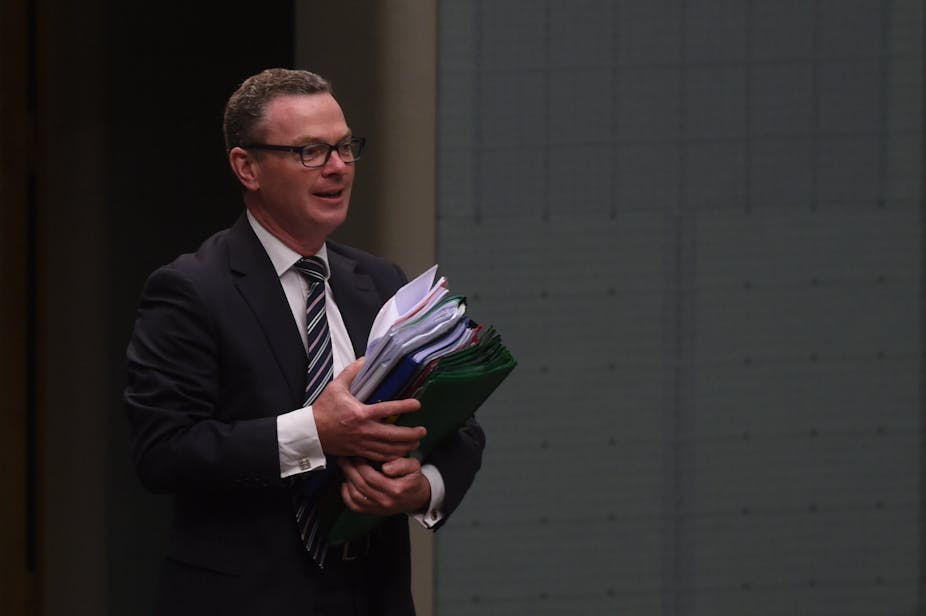This week the ministers of education for the states and territories will consider recommendations from federal Education Minister Christopher Pyne to revise the Australian curriculum. These recommendations are likely to follow the Australian government’s initial response to the findings of the National Curriculum Review, written by business academic Ken Wiltshire and education researcher Kevin Donnelly.
How to resolve the overcrowded curriculum
One of the main messages in the review, and the government response to the review, was that the curriculum is overcrowded. The review described the curriculum as having:
far too much content than can be reasonably delivered by our schools and teachers, impacting on the quality of learning of our students.
This was particularly thought to be a problem in the early years of primary schooling, because it reduced the time that could be devoted to literacy and numeracy. To address this perceived problem the Wiltshire-Donnelly report identified two different ways of reducing content — two because the reviewers could not reach an agreement on a single proposal.

Wiltshire recommended that in the Foundation Year and Years 1 and 2 the curriculum have only two components — literacy and numeracy. More subjects would be added in Year 3 and again in Year 7.
In Donnelly’s model, maths, English, science and history would be compulsory from Foundation to Year 10. All other subjects would be electives. In other words, he advocates the same structure of compulsory and elective subjects for all years.
Both these recommendations involve major changes to the curriculum that is currently being introduced into schools across the country.
The assumption is that other subjects take time away from the teaching of literacy and numeracy. However, the recommendation to remove the cross-curriculum “general capabilities” to make room for literacy and numeracy makes little sense because these are capabilities that span a range of subjects, not actual content. Wiltshire recognises this by recommending that in the early years:
teachers would use relevant content from disciplines as they develop literacy and numeracy content and skills.
Yet his model still proposes to remove this content from the curriculum.
Is the curriculum actually overcrowded?
The belief that the primary school curriculum is overcrowded is questionable. The international comparisons used by the Wiltshire-Donnelly review as benchmarks against which to judge the Australian curriculum do not support it.
In the first year of primary school in England the compulsory subjects are English, mathematics, science, art and design, computing, design and technology, geography, history, music and physical education. These continue throughout the primary years, with a second language being added in Year 3.
Singapore and Finland, two other benchmark countries, have a similar breadth of content. So while there is scope to reduce the content of some subjects in the Australian curriculum, international comparisons do not suggest a need to reduce the number of subjects in the primary school years.
Wiltshire’s curriculum model further reduces content in these years by integrating history, geography and civics and citizenship into a combined humanities and social sciences subject. This is a surprising recommendation, because it would mean a return to Studies in Society and Environment (SOSE), which is being phased out as the Australian curriculum is progressively implemented.
This integrated subject gained a reputation for lack of rigour and depth and in the new Australian curriculum was split into its constituent disciplines. A reversion to SOSE is at odds with the final report’s support of a more rigorous curriculum based on discipline knowledge.
In the secondary school years, Wiltshire’s curriculum model makes a wide range of subjects compulsory up to the end of Year 10. Donnelly’s model, on the other hand, makes only four subjects compulsory from Foundation to Year 10, and the rest electives. No explanation is provided for the choice of the four subjects, and particularly for the choice of history as the only compulsory humanities and social sciences subject.
At present, SOSE, or its equivalent, is or has been a compulsory subject in most jurisdictions up to Year 10, and in Queensland up to Year 9. Whatever its failings, SOSE did teach students something about the contemporary world through elements from geography, economics and sociology. In Donnelly’s model this knowledge is seen as optional, and students’ understanding of the world around them would suffer as a consequence.
In narrowing the core curriculum, Donnelly appears to be advocating a different direction to many high-performing school systems in other countries. A recent report for the Review of the National Curriculum in England examined the structure of the curriculum in 12 countries or states/provinces, and concluded:
International evidence supporting the provision of focused breadth at Key Stage 4 [i.e. Years 10 and 11] is extremely strong and it appears that England narrows its curriculum earlier than many of the high-performing jurisdictions. This has the consequence at Key Stage 4 of depriving many young people of access to powerful forms of knowledge and experience at a formative time in their lives, and foreclosing on some pathways and choices.
Depriving young people of information seems to be the exact opposite of what we want from a quality education system and a well-thought-out curriculum.

